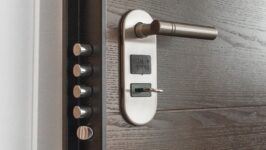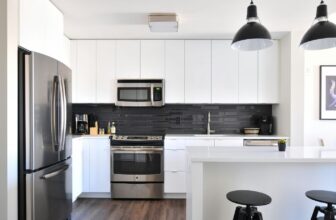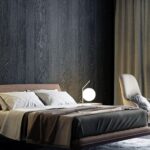
The Secret to Comfortable Interiors: Insulated Access Doors for Better Temperature and Sound Management

When creating a cozy, comfortable space, most people think of soft cushions, warm lighting, and stylish decor. While those touches set the mood, something even more essential is working quietly behind the scenes—temperature and sound control. That’s where insulated access doors come in.
Often installed in walls, ceilings, or floors, these access doors provide entry to plumbing, electrical systems, or HVAC units. They’re key to creating a pleasant environment, helping manage heat flow and reduce noise.
In this article, we’ll explore how insulated access doors make living and working spaces more efficient.
Temperature Control and Energy Efficiency
Dealing with temperature fluctuations can be a real challenge. Cold drafts sneaking in during the winter can make a room feel uninviting, while in the summer, trapped heat can turn even the coziest corner into an uncomfortable space. Insulated access doors play a role in maintaining a steady indoor climate by helping to minimize heat loss or gain.
They are often designed with foam, mineral wool, or other specialized insulating layers that act as barriers against temperature changes. This thoughtful construction offers several key benefits:
- Lower Energy Costs – Heating and cooling systems consume considerable energy, especially when compensating for temperature fluctuations caused by poor insulation. This leads to decreased energy consumption, lowering utility bills and reducing environmental impact through more efficient energy use.
- Better Building Performance – Energy efficiency isn’t just a luxury—it’s often a requirement, especially for commercial and industrial properties striving to meet energy codes and sustainability certifications.
-

Proper insulation contributes significantly to achieving these standards. It helps buildings retain heating and cooling more effectively, reducing reliance on mechanical systems and supporting overall environmental performance.
- Condensation Control – Fluctuating indoor temperatures often lead to condensation forming on walls, ceilings, and other surfaces. This moisture can create an ideal environment for mold growth, wood rot, and the deterioration of building materials over time. An insulated access door helps maintain consistent interior temperatures, reducing the likelihood of condensation-related issues.
Noise Reduction for a Quieter Space
Soundproofing is as important as temperature control, especially in busy environments where noise can easily disrupt focus or relaxation.
Controlling sound contributes to productivity, privacy, and comfort in commercial spaces like offices, hotels, healthcare facilities, and educational institutions. Even in homes, having quieter spaces makes a noticeable difference in health. Insulated access doors are a simple yet effective solution to reduce sound transmission and create more peaceful environments.
Here’s how insulated access doors can help with noise control:

- Sealed Edges – Tight seals around the door frame prevent sound leaks, blocking airborne noise from slipping through gaps and cracks that standard doors might leave exposed.
- Dense Core Construction – The solid, dense core of insulated access doors adds mass, which helps to block and reflect sound, reducing the transfer of noise from one space to another.
- Vibration Reduction – The materials used help minimize vibrations, which can carry sound through walls and structures, creating a quieter environment even near noisy equipment or appliances.
Where Insulated Access Doors Make a Difference
- Home Offices – Working from home can be difficult with background noise from family activities. An insulated access door helps keep workspaces quiet, making it easier to focus on calls, meetings, and tasks without constant interruptions.
- Bedrooms and Nurseries – A good night’s sleep is essential, especially for children and babies. These doors help block out household noise, ensuring restful sleep even when the rest of the house is active.
- Living Rooms and Entertainment Areas – Enjoy movies, music, or game nights without worrying about disturbing other areas of the house. Insulated doors contain the sound, so you can turn up the volume without disrupting the peace.
- Laundry Rooms and Mechanical Spaces – Appliances like washers, dryers, and HVAC systems can be surprisingly noisy. Installing insulated access doors in these areas helps muffle operational sounds, keeping the rest of the house quiet.
- Healthcare Facilities – Insulated doors minimize noise from equipment, foot traffic, and conversations, fostering calmer, more restful environments for patients and staff. This level of sound control is essential in hospitals and clinics, where a quiet atmosphere supports patient recovery and overall well-being.
- Educational Institutions – Classrooms, libraries, and study areas benefit from reduced noise levels to enhance learning and concentration. Insulated access doors help minimize distractions, allowing students to focus more effectively.
- Industrial and Mechanical Rooms – Noise from machinery, HVAC systems, and equipment rooms can disrupt homes and businesses. Luckily, insulated access doors help keep those sounds in check, creating quieter and more serene spaces.
Conclusion
Comfort is often the result of meticulous attention to detail, shaped by visual design and the underlying elements that support the environment. Insulated access doors contribute to this by enhancing temperature regulation and minimizing noise, creating spaces that maintain their intended atmosphere with consistency and efficiency.



















































































